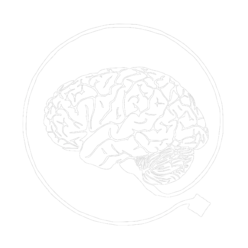Bertram Gawronski
Professor, David Wechsler Regents Chair in Psychology
University of Texas at Austin
Abstract. Research on moral dilemma judgments has been fundamentally shaped by the distinction between utilitarianism and deontology. According to the principle of utilitarianism, the moral status of behavioral options depends on their consequences; the principle of deontology states that the moral status of behavioral options depends on their consistency with moral norms. To identify the processes underlying utilitarian and deontological judgments, researchers have investigated responses to moral dilemmas that pit one principle against the other (e.g., trolley problem). However, the conceptual meaning of responses in this paradigm is ambiguous, because the central aspects of utilitarianism and deontology—consequences and norms—are not manipulated. We illustrate how this shortcoming undermines theoretical interpretations of empirical findings and describe an alternative approach that resolves the ambiguities of the traditional paradigm. Expanding on this approach, we present a multinomial model that allows researchers to quantify sensitivity to consequences (C), sensitivity to moral norms (N), and general preference for inaction versus action irrespective of consequences and norms (I) in responses to moral dilemmas. We present 8 studies that used this model to investigate the effects of gender, cognitive load, question framing, and psychopathy on moral dilemma judgments. The findings obtained with the proposed CNI model offer more nuanced insights into the determinants of moral dilemma judgments, calling for a reassessment of dominant theoretical assumptions.

Hi Bertram! Very cool and helpful paper! (Also, I’ve been appreciating your comments on other papers in the conference, so thanks for that too.)
I find myself wanting to hear a bit more about the psychopathy findings, about the omission bias, and about the action-vs-inaction parameter (I). Specifically,
Thanks again Bertram!
Hi Nick,
Thanks for your questions. I’m glad you liked the paper. To answer your questions…
1) I would disagree with the conclusion that psychopaths are disposed to make utilitarian judgments. Our data actually show the opposite: higher levels of psychopathy were associated with a weaker sensitivity to consequences in the CNI analyses. Hence, it makes no sense to say that psychopaths are disposed to make utilitarian judgments (which is the common conclusion from findings with the traditional approach). That being said, you are absolutely right that that the difference between psychopaths and non-psychopaths involves more than that. In our analyses with the CNI model, psychopaths were also less sensitive to moral norms and they showed a greater willingness to act regardless of consequences and moral norms. But to say that psychopaths have a tendency to make utilitarian judgments is misleading if one considers that psychopaths were less (not more) sensitive to consequences in a utilitarian sense.
2) Although the CNI model has several advantages over the traditional approach (as well as Conway & Gawronski’s, 2013, process dissociation model), it has one major limitation: it is not amenable to individual difference analyses. That’s because the number of dilemmas is too small to fit the model at the individual level. With our validated set of 24 dilemmas, the model is limited to analyses at the group level (e.g., for tests of between-group differences in experimental designs or known-group differences such as gender). Your question is very interesting, but it’s unfortunately not possible to test correlations between the three parameters and individual differences variables such as need for cognition.
3) The short answer is: the I parameter captures general inaction versus action regardless of consequences and norms by virtue of how it is defined the response patterns in Figure 1. As shown in the table on the right side of the figure, “I” leads to inaction across all four types of dilemmas and “1 minus I” leads to action across all four types of dilemmas. That being said, we cannot rule out that our model is incomplete in the sense that there are other determinants of moral dilemma responses that are not captured by the three parameters. The fact that our model fits the data suggests that it does a good job in describing responses to the four types of dilemmas. But that doesn’t rule out the possibility that there are other determinants that influence moral dilemma responses over and above the three determinants of our model. You are absolutely right that there might be more determinants of moral dilemma responses that are different from what is captured by the C, the N, and the I parameter. I can’t think of anything in particular, but if you have any thoughts on that, I’d be curious to hear them.
Best,
Bertram